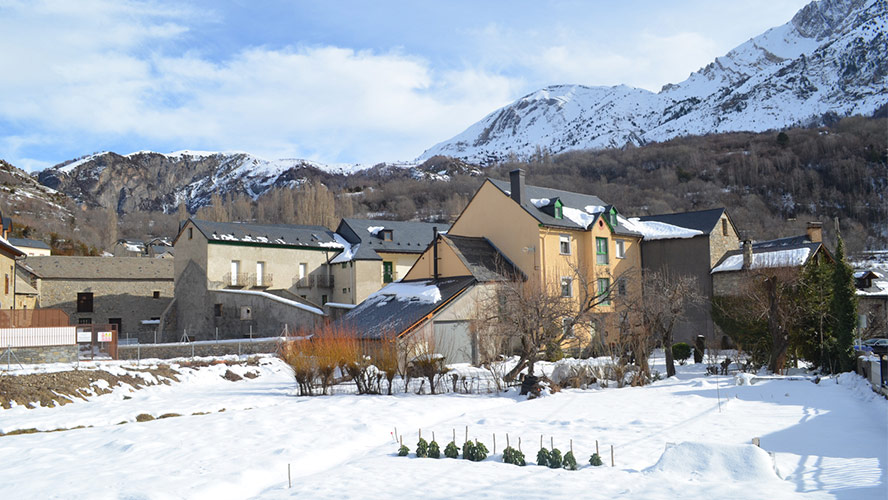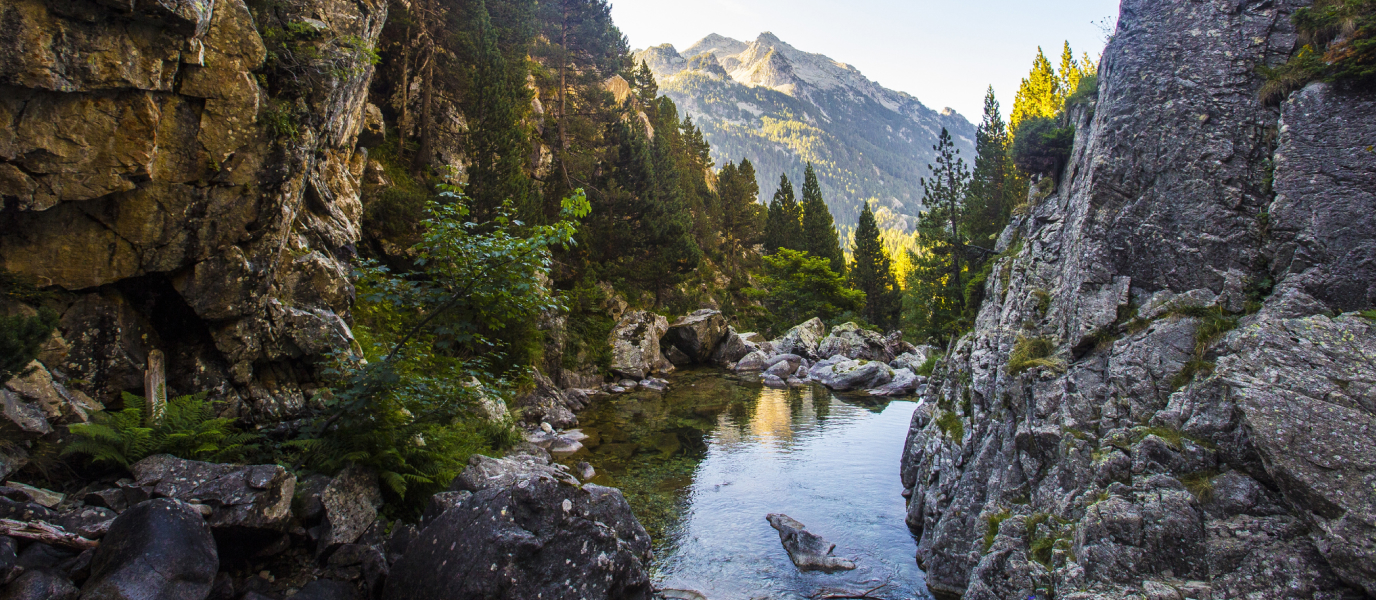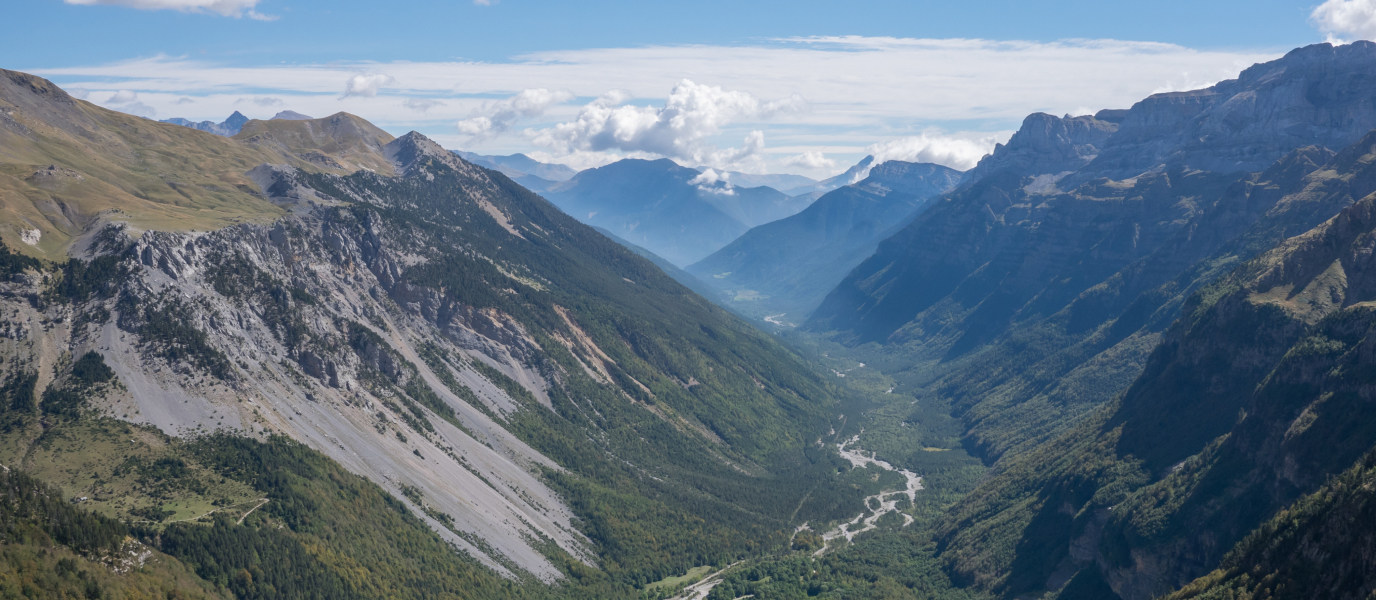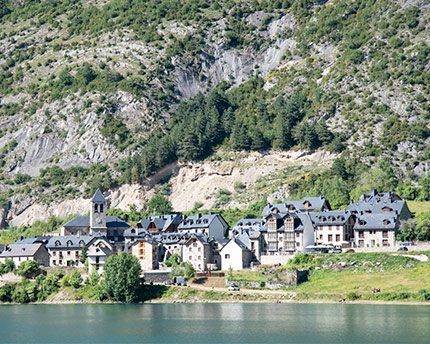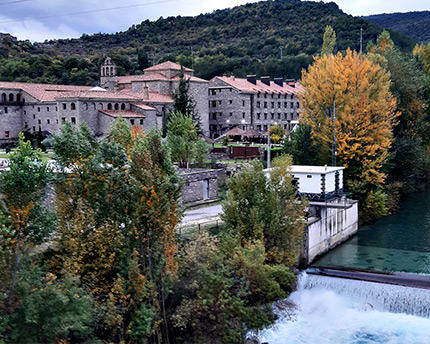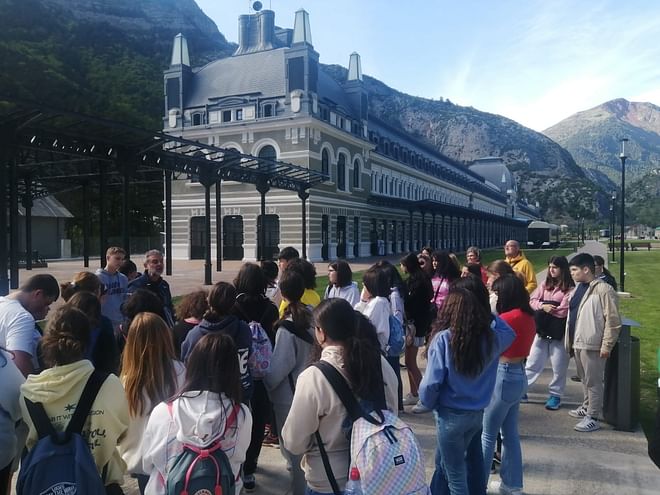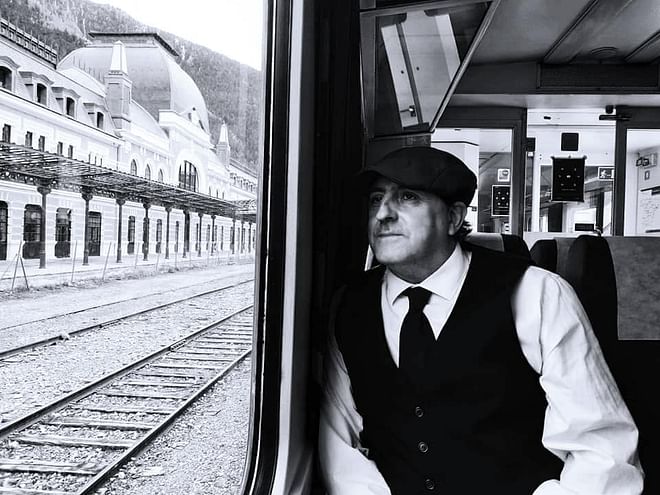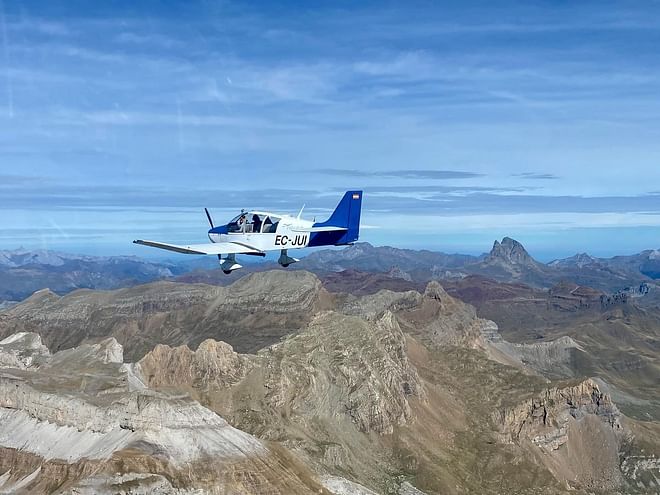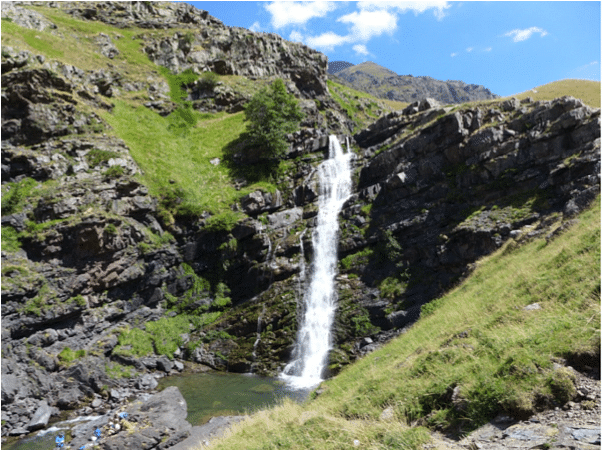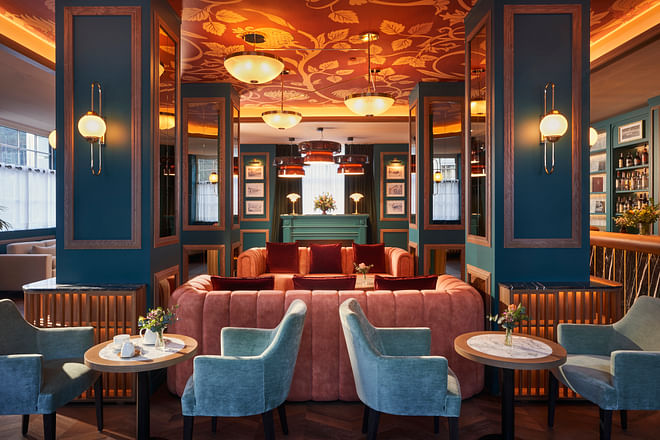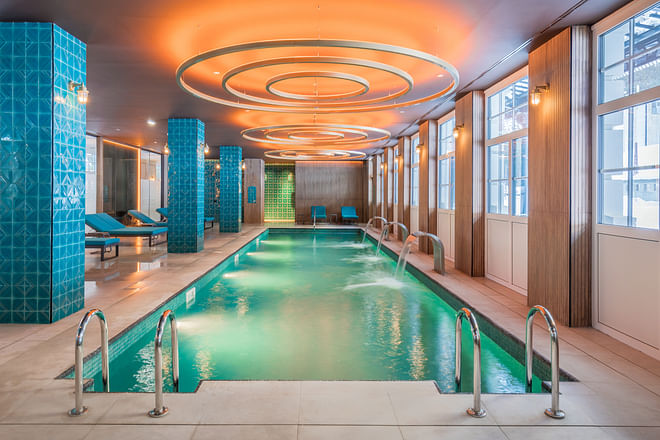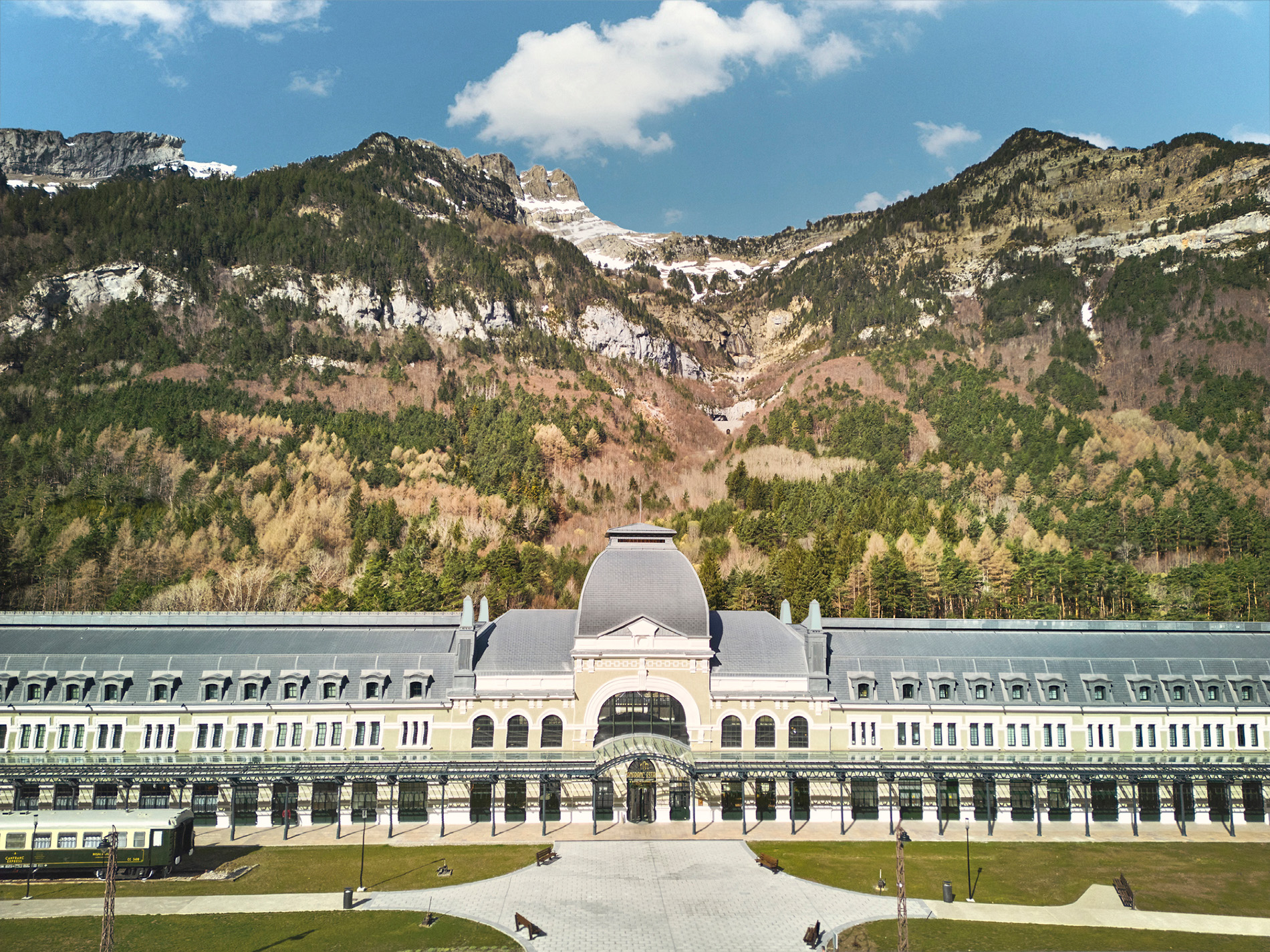Although devoid of great monuments or archaeological sites, the Pyrenean village of Panticosa, situated in the north of the province of Huesca, has become a veritable base camp from which to undertake all manner of nature-related activities. Set in the heart of the Tena valley, a unique enclave with a majestic landscape of reservoirs and crags, the municipality of Panticosa comprises three main centres of population: Panticosa, Baños de Panticosa and El Pueyo de Jaca. The first of these is home to the ski resort of Panticosa Los Lagos, a benchmark for the whole of Spain since it amalgamated with the station at Formigal. At the same time, the village of Panticosa serves as a point of departure for numerous hiking and cycling trails. In Baños de Panticosa, tourists can visit the famous spa of the same name, a hotel complex built during the nineteenth century which bases its therapeutic treatments on the area’s thermal waters. Lastly, El Pueyo de Jaca, bathed by the waters of the Búbal reservoir, offers the possibility of hugely enjoyable kayaking expeditions. Below, we give you full details of all the options offered by this little corner of the Aragon Pyrenees.
Panticosa spa
Among the great attractions of the Pyrenean municipality of Panticosa is its historic spa, a complex dating from the nineteenth century, whose location on the floor of the Tena valley envelops its visitors in a magical mountain ambience. The fact is that this enclave’s thermal waters were already being exploited by the Romans over 2,000 years ago, as evidenced by coins from the reign of the Emperor Tiberius found in the Manantial de Tiberio [Tiberius’ Spring] — the most famous spring in the area. Subsequently, many prominent nineteenth-century figures — including Ortega y Gasset and Ramón y Cajal — would visit this spa which is nowadays, without a doubt, one of Spain’s great flagships in mineral-medicinal treatments. Surrounded by high peaks such as Argualas (3,036 metres) and Garmo Negro (3,051 metres), visitors here can take advantage of a wide range of facilities. Among the most outstanding of these are the outdoor swimming pool with water jets, the vaporarium incorporating eucalyptus essence, and the igloo with chromotherapy.
The spa is located just 8 kilometres from the village of Panticosa on the narrow, winding A-2606 road leading towards Baños de Panticosa. This 15-minute drive will allow us to enjoy the area’s wonderful Pyrenean setting, an ideal destination for both nature lovers and mountain sports enthusiasts.
Formigal-Panticosa ski resort
Panticosa’s second great attraction is the Formigal-Panticosa ski resort, considered Spain’s leading skiing destination. Spread over six valleys and covering almost 180 kilometres of slopes suitable for skiing, the resort is divided into two sections: the Formigal section, located a stone’s throw from the village of Sallent de Gállego, and the Panticosa section, easily reached from the village of the same name. Both resorts, only 13 kilometres apart, offer first-class facilities, snow fields designed especially for children, and a lively atmosphere where the actual skiing is as important as the “après-ski”.
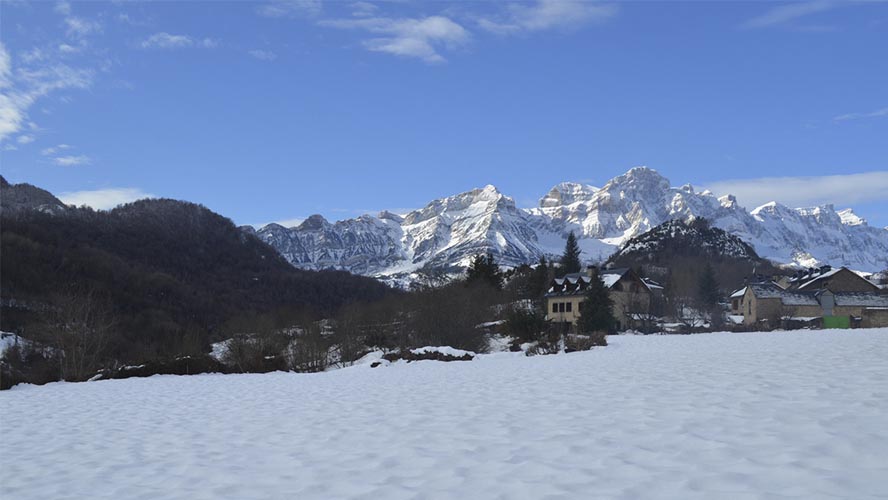
The Formigal section, the larger of the two, has four car parks and a free bus service to the foot of the slopes. Once there, we will discover a wide range of activities for adults and children alike. In addition, visitors can hire skiing equipment as well as taking classes with specialist teachers. Formigal also offers the chance to try its Tobogganing, a night-time descent of 2.5 kilometres on a classic wooden sled.
The Panticosa section offers a not-to-be-sniffed-at 39 kilometres of ski slopes and a slightly more family-orientated atmosphere. Moreover, its proximity to the town of Panticosa means that skiers can enjoy the area’s bars and restaurants without having to travel very far. And if we prefer cross-country skiing to alpine skiing, at Baños de Panticosa we have the Circuito de Esquí Nórdico del Balneario de Panticosa [Panticosa Spa Nordic Ski Circuit], three ski runs at basic, intermediate and expert levels respectively.
Panticosa town
Of course, we mustn’t forget that the village of Panticosa has its own tourist attractions. Regarded as the true heart of the Aragon Pyrenees, this village of fewer than 1,000 inhabitants can claim a privileged location — a good part of its territory lies within the Monumento Natural de los Glaciares Pirenaicos [National Monument of Pyrenean Glaciers], a group of 8 mountain ranges recognised as possessing a high level of scientific, cultural and scenic interests.
A stroll through the village offers the opportunity to see popular Pyrenean architecture, with a predominance of houses constructed from wood and stone, with black slate roofs. The village also offers us the chance to visit a number of monuments of great ethnographical interest, including the Church of the Assumption, built in the sixteenth century in late Gothic style, and the Concellar Bridge whose arch (the original construction of which dates from around 1550) once constituted an essential step on the Camino Real that crossed the valley.
Finally, it is worth pointing out other attractions linked to the village that are not necessarily connected to either the snow or to the thermal waters. For example, we have the El Sarrio mountain train, a fun guided tour in a little wheeled train, which departs from Panticosa on a 45-minute journey to the neighbouring valley — the Valle de la Ripera. The Panticosa cable car also departs from the village, an exciting form of transport that will take us up to the highest peaks so that we can explore the area’s glacial lakes, such as Sabocos y los Asnos.
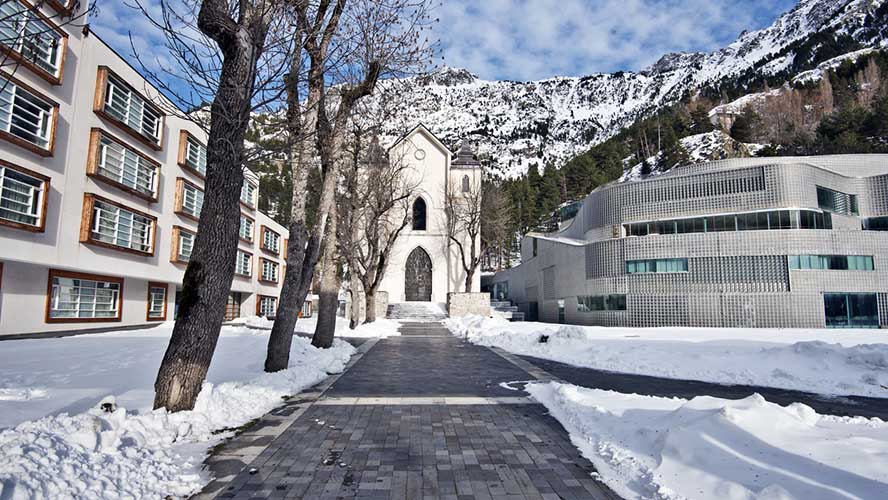
Hiking trails from Panticosa
Without a doubt, the hiking trails are the third great pillar of tourism in Panticosa. So we recommend a visit to the tourist information office (Calle San Miguel, no 37), where professionals with expert knowledge of the area can advise you of the trail best suited to your needs.
One straightforward trail, which also enables us to kill two birds with one stone, starts from the Panticosa Spa car park. Covering a distance of almost 2.5 kilometres, this trail, which also includes part of path GR-11, will give us an opportunity to see the different pavilions which protect the thermal springs that bring the area its renown — the Kidney spring, the Herpes spring and the Liver spring, among others. Moreover, this trail leads us to one of the area’s most important viewing points: the Mirador del Pino and the Mirador de la Reina. Both are considered unrivalled vantage points from which to admire the river Caldarés.
Another simple and circular trail, and one which takes in several places of interest begins at the Panticosa ski resort, and ends in El Pueyo de Jaca, on the banks of the Búbal reservoir. This walk covers uneven ground, and takes approximately an hour and a half. It is signposted along the entire distance, and is manageable for most people.
If, however, you are looking for more demanding trails, we can recommend two of the most well known. The first is the four-and-a-half-kilometre hike crossing La Lacuniacha, the Pyrenees’ wildlife park located in the nearby village of Piedrafita de Jaca. Then there is the trail that climbs to the Garmo Negro, one of the peaks bordering the Tena valley, and reaching a height of over 3,000 metres. This latter expedition will require at least 4 hours.
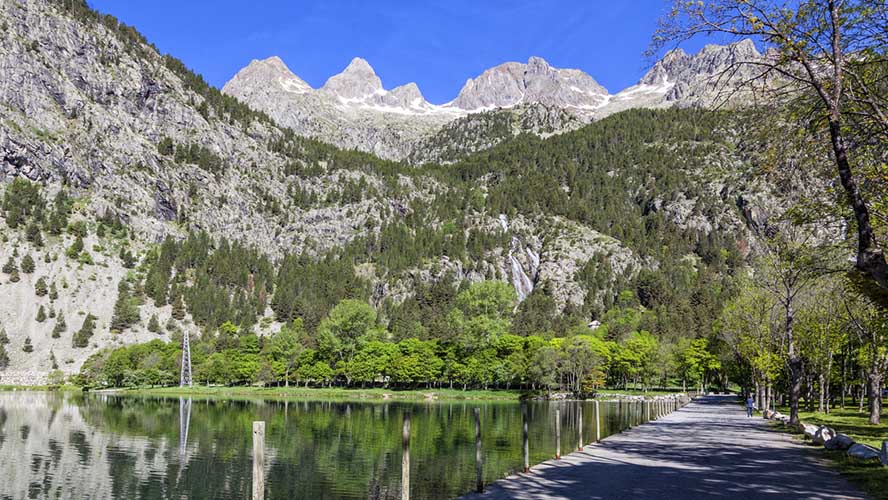
Eating in Panticosa
Of course, we mustn’t forget the age-old culinary traditions of this area of the Pyrenees. In bars and restaurants, we will find a rustic cooking style that knows how to make the most of locally-grown produce: different kinds of wild mushrooms (mainly boletus and saffron milk caps); game (wild boar and venison); meat products (black pudding and sausages); homegrown vegetables, and fish caught from the rivers and reservoirs, such as the Pyrenean trout.
That said, if you’re out skiing for the day, we recommend you try your luck at La Glera, a small, welcoming cabin located in the Formigal ski resort, which offers exceptionally good menus based on chargrilled meats.
If you happen to be in the town of Panticosa, there is a whole host of possibilities. However, we can thoroughly recommend two options that will definitely will not disappoint: firstly, Casa Morlans (Calle San Miguel, 4) where the menu offers a sumptuous array of all the culinary delights we’ve already mentioned. Then there’s Mesón Sampietro (Calle Alta, no number), a veritable flagship for chargrilled meat in Panticosa.
Useful information
- How to get there:
- By car (from Huesca): first take the E-7 road towards Sabiñánigo/Jaca. Then, take the N-260 turn-off, and continue ahead until you reach the A-136. Finally, take the A-2606 turn-off, signposted for Panticosa-Pueyo de Jaca.
- By bus: ALOSA routes from Huesca.
To obtain up-to-date information about services and opening hours, we recommend you visit Panticosa Town Council’s official website.
Pueblos con encanto cerca de Panticosa
Hay tres pueblos muy cerca de Panticosa que deberías visitar si tienes ocasión por su particular encanto. Hablamos de Lanuza, Sallent de Gállego y Hoz de Jaca. Te contamos por qué:
Lanuza
Situado a sólo 10 kilómetros de Panticosa, este delicioso pueblo quedó abandonado en los años 70 porque las aguas del pantano vecino iban a cubrirlo, algo que finalmente no sucedió. Ésta es la razón por la que, poco a poco, fue recuperado por sus vecinos y muchas de sus casas de piedra con tejados de pizarra se han rehabilitado. En su entorno se ha consolidado el célebre Festival Pirineos Sur, cuyo escenario flota sobre las aguas del pantano.
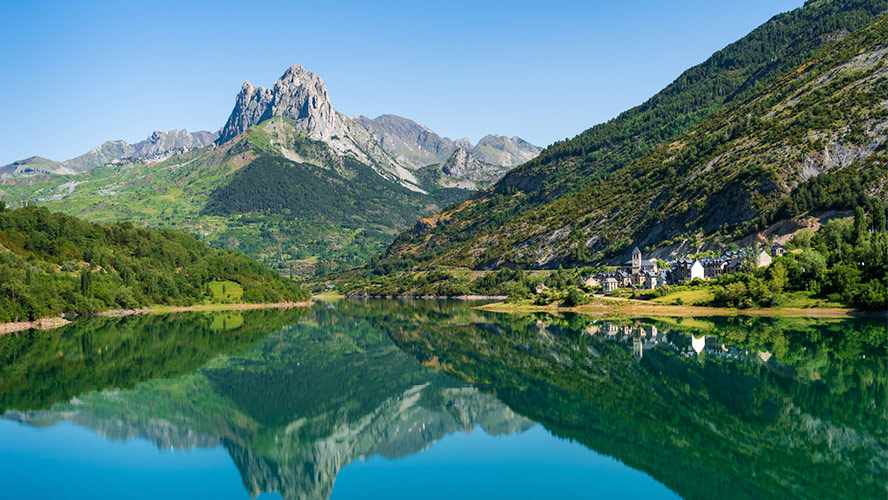
Sallent de Gállego
Sallent de Gállego, ubicado a un paso de Panticosa, es la capital del Valle de Tena. Su arquitectura tradicional es muy parecida a la de Lanuza y tiene, entre sus empinadas calles, lugares que merecen una visita, como el Casino, en el edificio del Ayuntamiento; el puente medieval que salva el río Aguas Limpias, o la estatua de Gigante de Sallent, un personaje real que medía 2,29 metros de altura y que nació en esta localidad en el siglo XIX.
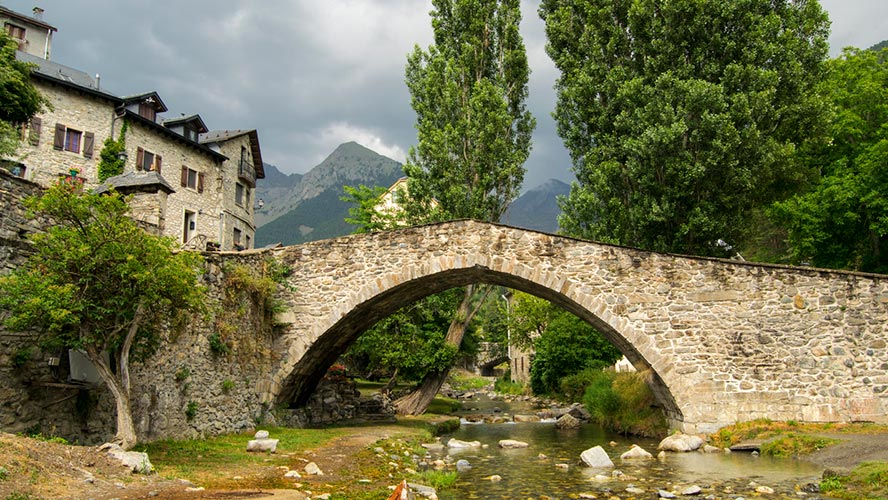
Hoz de Jaca
Este encantador pueblo conserva intacta la tradicional arquitectura pirenaica, por lo que merece la pena que te des un buen paseo por sus bonitas y tranquilas calles. Una vez que se acaban las casas, encontrarás un pequeño jardín y un mirador increíble, suspendido literalmente en el aire, desde donde verás el embalse a tus pies y tendrás unas vistas fabulosas del valle de Tena. Está a 8 kilómetros de Panticosa.
